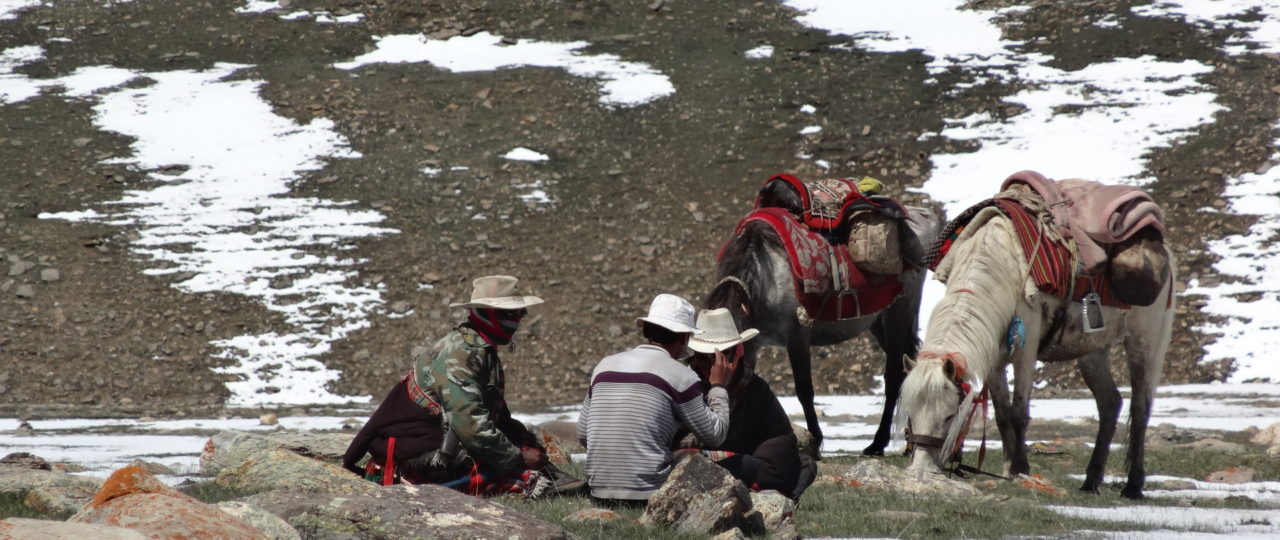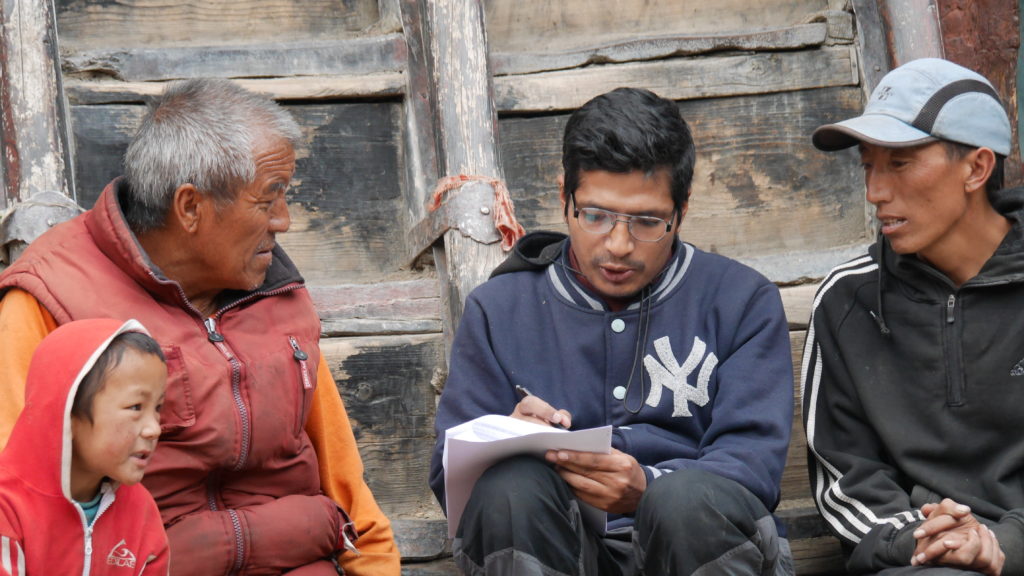Data analyses in preparation for Conservation Action
Understanding Himalayan wolf diet and what the local communities think about living with wolves.
These days we are conducting the dietary analysis of the wolf scats we collected in upper Humla, upper Dolpa and Kanchenjunga Conservation Area in Nepal during our past field expeditions. Looking at the hair and other solid remains in the wolf scats with a microscope we can understand what animals the wolves have eaten. This microscopic work of differentiating prey hair in the wolf scats requires a lot of precision and patience. But once mastered these inconspicuous hairs tell interesting stories about what the wolves have been hunting and scavenging across the high Himalayan mountain landscapes! We identify the different prey species in the scats based on the pattern of the hair cuticula (hair surface) and the medulla (hair core).
So we know what the particular wolf has eaten and through our genetic work we also know which wolf has left the scat behind. At the same time we have been analysing the social survey data we gathered by interviewing local people in the high mountain communities across all three study areas. For these interviews we spoke to a diverse range of people, from wise older people to enthusiastic youths, females and males, from monks and lamas to business people and school teachers. We spoke with them about nature, wildlife and the role of animals in their tradition and culture. Over the course of our researches in the high Himalayas we have learned many things from the local communities who have been living closely with nature since time immemorial. Of special interest to us are the old cultural stories and uses involving our study animals such as the use of wolf tongue to cure sore throats or the role of wild yak hair in marriage ceremonies.
These results allow us now to understand how the coexistence of carnivores and humans in the high Himalayas is shaped. And with these insights we are now gearing up for the next project phase where we will pilot conservation actions tailored to the high Himalayas to facilitate a long-term positive coexistence of humans and wildlife in these pristine wilderness areas.


